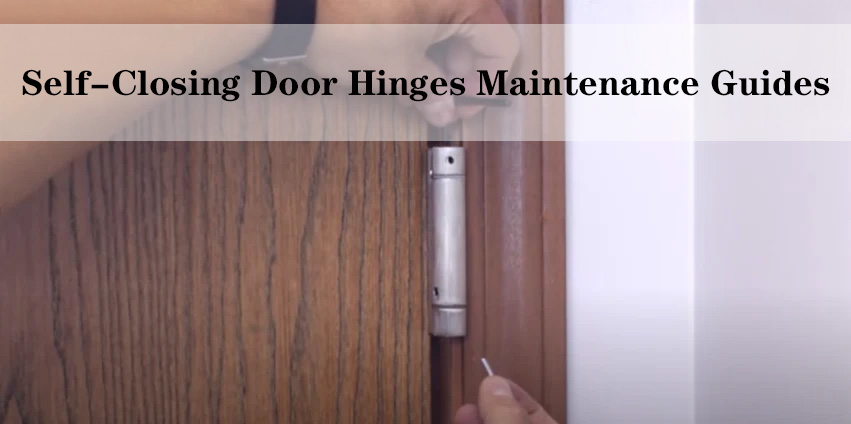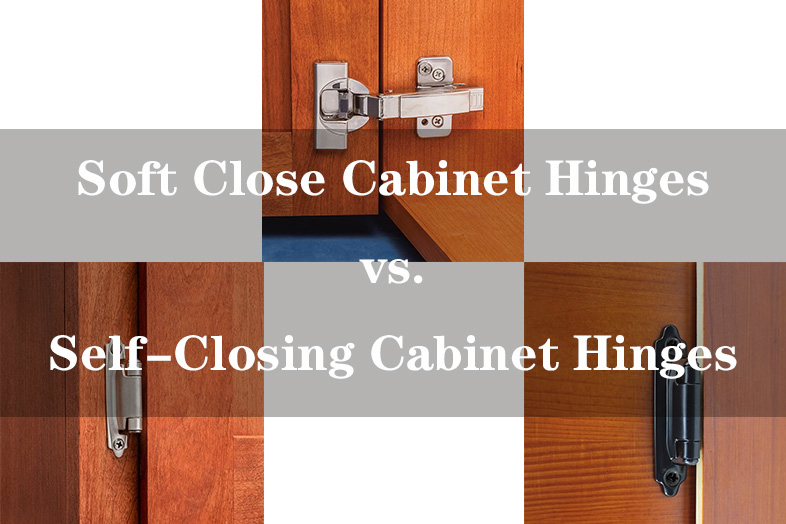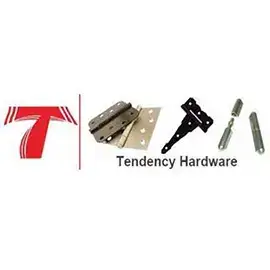Are you tired of the loud slamming sound every time you close your kitchen cabinet doors? If so, it’s time to consider upgrading to soft close cabinet hinges. These innovative hinges offer a range of benefits that not only enhance the functionality of your cabinets but also improve the overall ambiance of your kitchen.
One of the primary advantages of soft close cabinet hinges is their ability to eliminate noisy and abrupt door closures. Say goodbye to those irritating bangs and hello to a peaceful and serene kitchen environment. The gentle closing motion provided by these hinges ensures that your cabinet doors close quietly and smoothly, preventing any unnecessary disturbance in your home. In this guide, I’ll tell you how to install soft close hinges for a quieter space.
Understanding the Benefits of Soft Close Cabinet Hinges
Soft close cabinet hinges have revolutionized the way we interact with our cabinets, providing a host of benefits that enhance both functionality and user experience. These innovative hinges are designed to ensure a silent and smooth closure, eliminating the unpleasant sound of slamming cabinet doors.
One of the key advantages of soft close hinges is their ability to prevent damage to both the cabinet doors and the surrounding furniture. The gentle closing mechanism prevents doors from forcefully hitting against adjacent surfaces, reducing wear and tear over time. This not only extends the lifespan of your cabinets but also maintains their aesthetic appeal.
In addition to protecting your cabinets, soft close hinges offer a more enjoyable and peaceful environment in your home. Gone are the days of loud noises reverberating through your kitchen or bathroom every time you close a cabinet door. With soft close hinges, you can enjoy a quiet and serene atmosphere as these hinges silently guide your cabinets to a secure closure.

Furthermore, these hinges provide an added level of convenience for everyday use. They ensure that your cabinet doors fully close without any effort or force required from you. This feature is particularly beneficial when you have your hands full or need quick access to items stored in your cabinets.
The benefits of soft close cabinet hinges extend beyond functionality; they also add value to your home. Potential buyers appreciate the attention to detail that these high-quality hinges bring, as they signify superior craftsmanship and thoughtful design choices.
Step-by-Step Guide: Installing Soft Close Cabinet Hinges
1. Gather the Necessary Tools and Materials for the Installation Process
When it comes to installing cabinets, having the right tools and materials is crucial for a successful and efficient process. Gathering the necessary equipment ensures that you have everything you need to complete the installation seamlessly.
One of the essential tools for cabinet installation is cabinet hinges. These hinges play a vital role in ensuring that your cabinets open and close smoothly. Make sure you have the appropriate hinges for your specific cabinet style and size.
A screwdriver is another must-have tool for this project. It allows you to securely fasten screws and ensure that your cabinets are properly attached to the wall or other surfaces. Consider having both a Phillips-head screwdriver and a flat-head screwdriver on hand, as different types of screws may require different tools.
A drill is also essential, especially if you need to create holes in walls or other surfaces during the installation process. This tool helps in attaching cabinets securely and provides stability.
Measuring tape is crucial for accurate measurements during installation. It allows you to measure distances, heights, and widths accurately, ensuring that your cabinets are aligned correctly.
Don’t forget to have a pencil nearby as well. You can use it to mark measurement points or make notes on surfaces where necessary adjustments need to be made.
Lastly, having a level will help ensure that your cabinets are installed straight and levelled correctly. This tool prevents any unevenness or tilting, providing a professional finish to your installation.
By gathering these necessary tools – cabinet hinges, screwdriver, drill, measuring tape, pencil, and level – you will be well-prepared for the cabinet installation process ahead. With these items at hand, you can proceed confidently knowing that you have everything required for a successful project completion.

2. Remove the Existing Cabinet Door Hinges
(Note: If this is the first time you are attaching hinges to a cabinet door, this step can be omitted.)
Removing cabinet door hinges can be a daunting task, but with the right process and tools, it can be done smoothly and efficiently. Whether you are looking to update your cabinet hardware or replace damaged hinges, this section will guide you through the necessary steps to remove existing cabinet door hinges.
To begin, gather the tools you will need for the job, such as a screwdriver or drill with a suitable bit. Start by locating the screws that secure the hinge to the cabinet door. In most cases, there will be two or three screws per hinge. Carefully unscrew these screws, being mindful not to strip them in the process.
Once all of the screws are removed, gently lift and separate the cabinet door from its frame. Take note of any resistance or sticking points as this may indicate additional hardware holding it in place. If necessary, use a putty knife or similar tool to carefully pry apart any adhesive or stuck surfaces.
Now that you have successfully removed the cabinet door from its frame, it’s time to focus on removing the old hinges themselves. Inspect each hinge for any additional screws holding it in place on either side of the hinge plate. Unscrew these additional screws if present.
With all screws removed, you should now be able to easily detach each hinge from both the cabinet door and frame. Take care not to damage any surrounding surfaces during this process.
If you are looking to upgrade your hinges to Soft Close Cabinet Hinges for added convenience and noise reduction, now is an opportune time to do so. Simply follow the manufacturer’s instructions for installing your new hinges once you have successfully removed the old ones.
3. Measure and Mark the Placement of the New Soft Close Hinges

When it comes to installing new soft close hinges on cabinets, precision is key. To ensure a seamless installation, it is crucial to accurately measure and mark the placement of the hinges. This not only guarantees a secure fit but also ensures that the cabinet doors close smoothly and quietly.
To begin, gather all the necessary tools such as a measuring tape, pencil, and level. Start by measuring the desired distance from the edge of the cabinet frame to determine where the hinge should be positioned. Take into account any existing screw holes or hardware that may need to be aligned with.
Once you have determined the ideal placement for your hinges, carefully mark the screw holes on both the cabinet frame and door using a pencil. Make sure these marks are clearly visible and line up with each other when the door is closed.
To further guarantee accuracy, use a level to ensure that both hinges are aligned perfectly parallel to each other. This will help prevent any misalignment or uneven closing of cabinet doors.
By taking these precise measurements and marking screw holes accurately, you can confidently install your new soft close hinges with ease. The end result will be cabinets that not only look aesthetically pleasing but also function flawlessly for years to come.
4. Pre-drill Screw Holes for Easy Installation

Pre-drilling screw holes is a simple yet highly effective technique that can make the installation process a breeze while preventing wood splitting. By taking the time to pre-drill holes before inserting screws, you can ensure a secure and long-lasting connection without compromising the integrity of the wood.
One of the key benefits of pre-drilling is that it helps to prevent wood splitting. When a screw is driven directly into wood without a pilot hole, it exerts significant force on the surrounding fibers, causing them to separate and potentially leading to unsightly and structurally weak splits. However, by creating a small pilot hole with a drill bit slightly smaller than the diameter of the screw, you allow for easier insertion while minimizing stress on the wood.
Furthermore, pre-drilling allows for more precise placement of screws. It gives you greater control over where exactly each screw should go, ensuring that they are properly aligned and flush with the surface. This not only enhances the aesthetic appeal but also improves overall functionality and durability.
In addition to preventing splitting and improving accuracy, pre-drilling also makes installation easier. With pre-drilled holes guiding your screws into place, you can avoid frustrating instances of slipping or misalignment that often occur when attempting to drive screws directly into unprepared surfaces. This saves both time and effort while reducing the risk of damaging your materials or tools.
Whether you are working on woodworking projects or simple household repairs, taking the extra step to pre-drill screw holes is well worth it in terms of convenience and quality results. By doing so, you ensure a smooth installation process while safeguarding against wood splitting and achieving professional-looking outcomes every time.
5. Attach Soft Close Hinges to Cabinet Frame and Door using Screws Provided
To ensure a seamless and secure installation of soft close hinges on your cabinet frame and door, it is essential to follow the proper steps and use the screws provided or recommended size screws. By doing so, you can achieve a smooth closing motion and enhance the functionality of your cabinets.
When attaching soft close hinges, start by positioning the hinge on the cabinet frame in the desired location. Make sure it is aligned properly before proceeding. Next, take the provided screws or recommended size screws and insert them into the pre-drilled holes on the hinge.
Using a screwdriver or drill, carefully tighten each screw until they are securely fastened. Be mindful not to overtighten as this could damage the hinge or strip the screw holes.
Once you have attached the hinges to the cabinet frame, repeat these steps for attaching them to the door. Ensure that both hinges are aligned correctly with each other for optimal performance.
By following these instructions and using either the provided screws or recommended size screws, you can confidently attach soft close hinges to your cabinet frame and door. This will result in a reliable and smooth closing mechanism that adds convenience and elegance to your space.
6. Adjustment and Testing: Ensuring Smooth Operation of Soft Close Mechanism

Note: Height adjustment by screw A.(-/+ 2 mm), Side adjustment by screw B.(-/+ 2 mm).
In order to ensure the smooth operation of the soft close mechanism, it is crucial to focus on adjustment and testing. Fine-tuning hinge adjustments play a significant role in achieving the perfect soft closing action.
When it comes to adjusting hinges for optimal performance, attention to detail is key. Each hinge must be carefully adjusted to ensure that the door closes smoothly and quietly. By making precise adjustments, you can achieve a consistent and reliable soft closing experience.
Testing is equally important in this process. Once the hinges have been adjusted, it is essential to thoroughly test the functionality of the soft close mechanism. This involves opening and closing the door multiple times to ensure that it operates smoothly without any resistance or sudden movements.
By investing time in adjustment and testing, you can guarantee that your soft close mechanism performs flawlessly. Not only does this enhance user experience by providing a gentle and controlled closing action, but it also prolongs the lifespan of your furniture or cabinetry by reducing wear and tear on hinges.
In conclusion, taking the time to fine-tune hinge adjustments and conduct thorough testing is vital for ensuring a smooth operation of the soft close mechanism. This attention to detail will result in a superior user experience while also increasing the longevity of your furniture or cabinetry.
Celebrate Your Upgraded Cabinets: Enjoy the Benefits of Quiet Closing Doors!
Upgrade your cabinets and experience the satisfaction of quiet closing doors with newly installed soft close cabinet hinges. Say goodbye to the frustration of slamming cabinet doors and hello to a more peaceful and enjoyable kitchen or bathroom experience.
Soft close cabinet hinges are a game-changer when it comes to enhancing the functionality and convenience of your cabinets. They provide a gentle, controlled closing action that eliminates the need for harsh slams, reducing wear and tear on both your cabinets and your nerves.
Imagine effortlessly closing your cabinets with just a gentle push, knowing that they will softly glide into place without any noise or impact. No more waking up family members or disturbing guests with noisy cabinet closures. With soft close hinges, you can enjoy a quieter living space that promotes relaxation, tranquility, and harmony.
Not only do soft close hinges offer improved functionality, but they also add a touch of elegance to your cabinets. Their sleek design seamlessly integrates into any style or decor, enhancing the overall aesthetic appeal of your space.
Investing in soft close cabinet hinges is an investment in not only the longevity of your cabinets but also in your own peace of mind. Experience the satisfaction that comes from knowing you’ve upgraded to a higher level of quality and convenience.
Celebrate this upgrade and revel in the benefits that come with quiet closing doors. Upgrade today and enjoy the satisfaction of newly installed soft close cabinet hinges – you won’t regret it!























